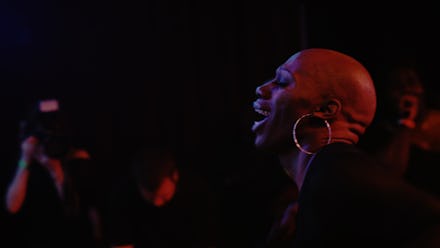Here's What Some Black LGBTQ People Are Doing to Survive in the Age of HIV

The first time I got an HIV test, I was racked with fear. I grew up black and gay in the '90s. There were no quick and easy rapid tests available then. I spent long and distressing days waiting. The names and faces of other black queer men I met in passing who died too early, and sometimes in secret, kept me distracted. When I wasn't gripped by panic, I agonized.
It didn't matter that my results came back negative then and the many times I was tested after. I believed — with the same type of ardent faith I once placed in a homo-hating God — that AIDS would be an inescapable consequence of my queerness.
That was one of the lies that circulated in my life. It was a hard untruth to discount given the real ways AIDS decimated so many lives and bodies of black queer men and trans women from the previous generation. And a few decades later, black men are still disproportionately impacted by the HIV crisis.
If a recent Centers for Disease Control and Prevention briefing is correct and the current rates of HIV diagnoses persist, about 1 in 2 black men who have sex with men in the United States will be diagnosed with HIV during their lifetimes. Black men who have sex with men already feel silenced and shamed by hopeless public health announcements like those offered by the CDC. The recent news may add another layer of stigmatization.
It's a staggering and dire statistic — one that reinforces the dreadful sense that clouds my life and the lives of so many younger and older black men. How heavy a weight a life can be when it can be snuffed out by a disease so many black men have been taught to fear — one I feared to the point of utter exhaustion and surrender. Many years later, I still can't believe I made it this far living as an HIV-negative black gay man. The trauma that has surfaced as the consequence of the widely ignored HIV epidemic is weighty.
The public might be familiar with the narratives of devastation that are often highlighted when HIV is talked about. But I am also still alive, happy and full of vitality two decades after my first HIV test — and after living through years of a life compounded with self-hate and fear — because of a broad community of black queer and trans folk who have surrounded and cared for me. Yes, HIV is a devastating force, but it will never be powerful enough to destroy the deep connections forged in black queer and trans communities.
In this episode of The Movement, I return to a few unforgettable spaces where I learned to be black, queer and free, like the Christopher Street Pier and Hetrick-Martin Institute in New York City. I speak with leaders from NYC's ballroom community. It's a story that is close to my heart because it is the other side of a larger story of black LGBTQ life that goes untold — a story of collective love and struggle strengthening a community in the face of so many impediments.
The ballroom community is a site of black liberation. The ballroom scene emerged in response to the exclusion and antagonism black LGBTQ and Latino queer and trans people faced within their own communities and the LGBTQ spaces where many sought safety. Public health concerns, like HIV, are exacerbated by the racism black and Latino LGBTQ people may experience within broader LGBTQ communities.
The dynamic people I interview in the episode, like the popular dance icon and wonder woman of vogue, Leiomy Maldonaldo, reminded me that the art and cultural forms forged out of communities embattled by hardships tend to be innovative. But they are also life-giving, especially in the face of the HIV epidemic.
Voguing saved Maldonaldo's life and the ballroom community is her family. I am certain the same can be said by so many others. So many black LGBTQ people within the ballroom community, and without, have sustained me, as well. This, too, is part of the collective narrative of black LGBTQ life in the U.S. It's more nuanced, more hopeful, than a dooming statistic prophesying our deaths.
Check out this episode of The Movement and be inspired: